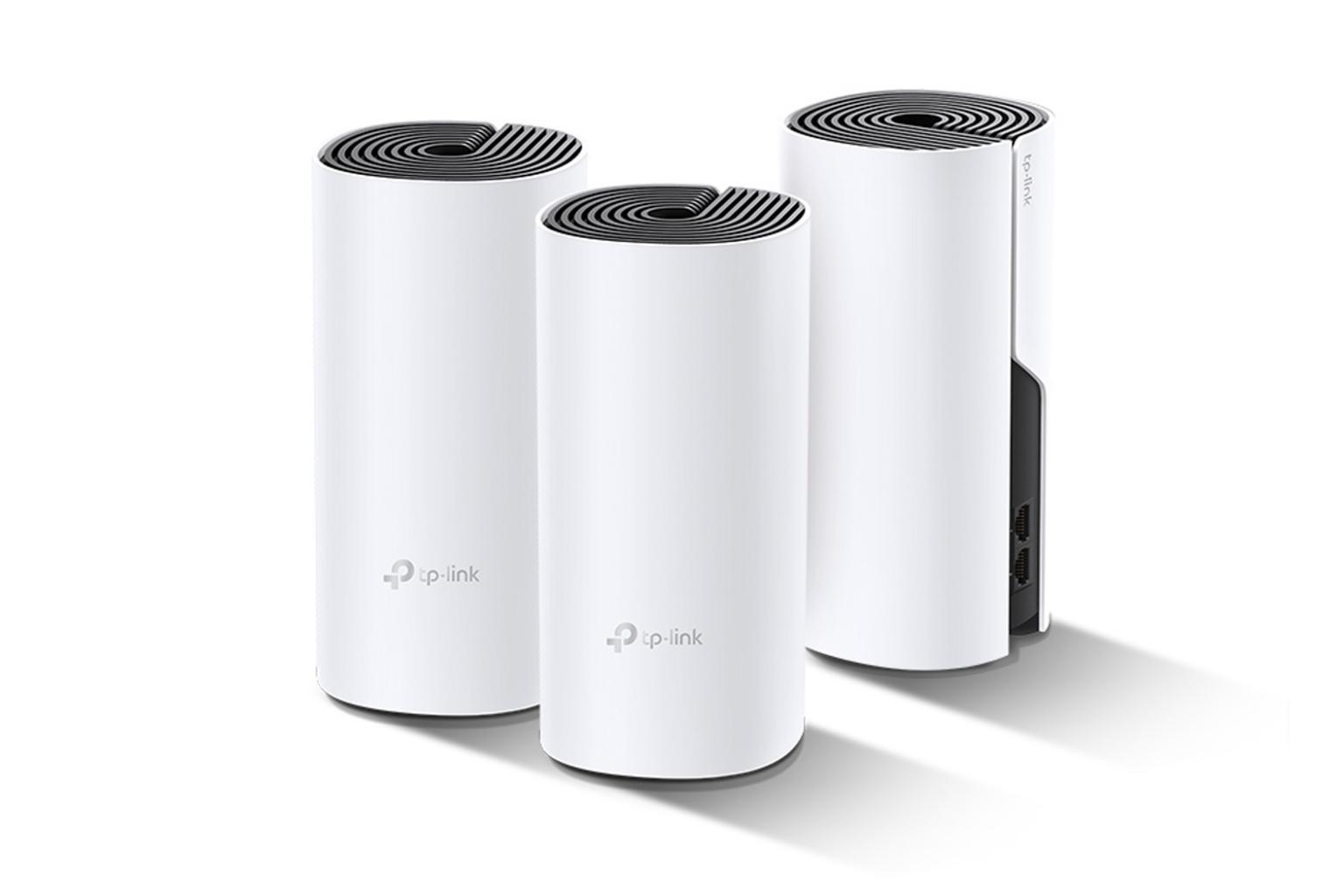Tech review: TP-Link Deco P9 taps powerline technology for Wi-Fi woes
Sign up now: Get ST's newsletters delivered to your inbox

The P9 is said to have a Wi-Fi coverage of up to 6,000 sq ft, compared with 4,000 to 5,000 sq ft of other mesh routers.
PHOTO: TP-LINK
Vincent Chang
Follow topic:
Mesh routers are touted by manufacturers as the panacea to residential Wi-Fi woes. These devices rely on multiple wireless nodes to extend Wi-Fi coverage in homes.
But while they do work as advertised, these routers can sometimes be stumped by thick walls that hinder Wi-Fi signals. They are also less effective in larger or multi-storey homes.
TP-Link's Deco P9 hybrid mesh router rectifies these issues by adding a powerline networking feature that uses your home's existing electrical wiring to transmit data.
Available in Singapore as a pack of three identical wireless nodes for $309, the P9 is said to have a Wi-Fi coverage of up to 6,000 sq ft, compared with 4,000 to 5,000 sq ft of other mesh routers.
Like most modern routers, you have to use a mobile app (TP-Link Deco for iOS and Android) to set up the router. Choose a P9 node to be the primary unit that connects to your fibre termination point via Ethernet cable, power it up and follow the app's instructions.
Compared with other mesh routers, the P9 is easier to set up. I do not have to ensure the other secondary nodes are placed within Wi-Fi range of the primary unit. They will automatically use either the powerline or wireless connection to create a mesh network with other P9 nodes. But I wished that the P9 indicated which method the nodes were using - powerline or wireless - to connect to each other.
You can even connect the P9 with other Deco router models to create a single mesh network. This makes the P9 useful for existing Deco users who have issues with Wi-Fi coverage.
But the P9's power cable could be longer. I wanted to place one of the nodes at a higher location such as the top of a bookshelf to optimise its Wi-Fi coverage, but the power cord was too short.
When signed in with my TP-Link account, I could monitor my home network with the Deco app while outside. The app offers some extras such as parental controls and a quality of service (QoS) feature to reserve bandwidth for specific client devices. Brands like Asus offer more advanced features, but the P9's software features should suffice for most users.
To test the effectiveness of its dual powerline and mesh networking features, I checked the signal strength of a P9 node placed in a far-flung bedroom. It maintained a strong Wi-Fi signal even when the room door was closed. This is unlike my experience with other mesh routers, which usually suffer a drop in signal strength upon closing the door.
But despite producing a good Wi-Fi signal throughout the home, the P9 is ultimately not a high-end router. It only supports two wireless bands (2.4GHz and 5GHz) with a maximum theoretical speed of 867Mbps for its 5GHz band.
As a result, its performance is average. In my speed test, the P9 managed an average download speed of 329Mbps for a laptop placed in the same living room as the primary P9 router. This dipped to 60Mbps when I moved the laptop to the farthest bedroom in my home, which is similar in speed to other mesh routers in this price range.
Overall, the Deco P9 is a relatively affordable mid-range mesh router, but with a powerline feature that may be crucial for some users.
FOR
Powerline networking fixes weaknesses of mesh routers
Relatively inexpensive
Works with other Deco mesh routers
AGAINST
Average speed
Power cable could be longer
SPECS
Price: $309 (pack of three)
Ethernet Interface: 2 x Gigabit LAN ports
Standards: 802.11a/b/g/n/ac, HomePlug AV2
Security: WPA-PSK/WPA2-PSK
Advanced Firewall Features: NAT and SPI
RATING
Features: 4/5
Design: 4/5
Performance: 3.5/5
Value for money: 4/5
Overall: 4/5

